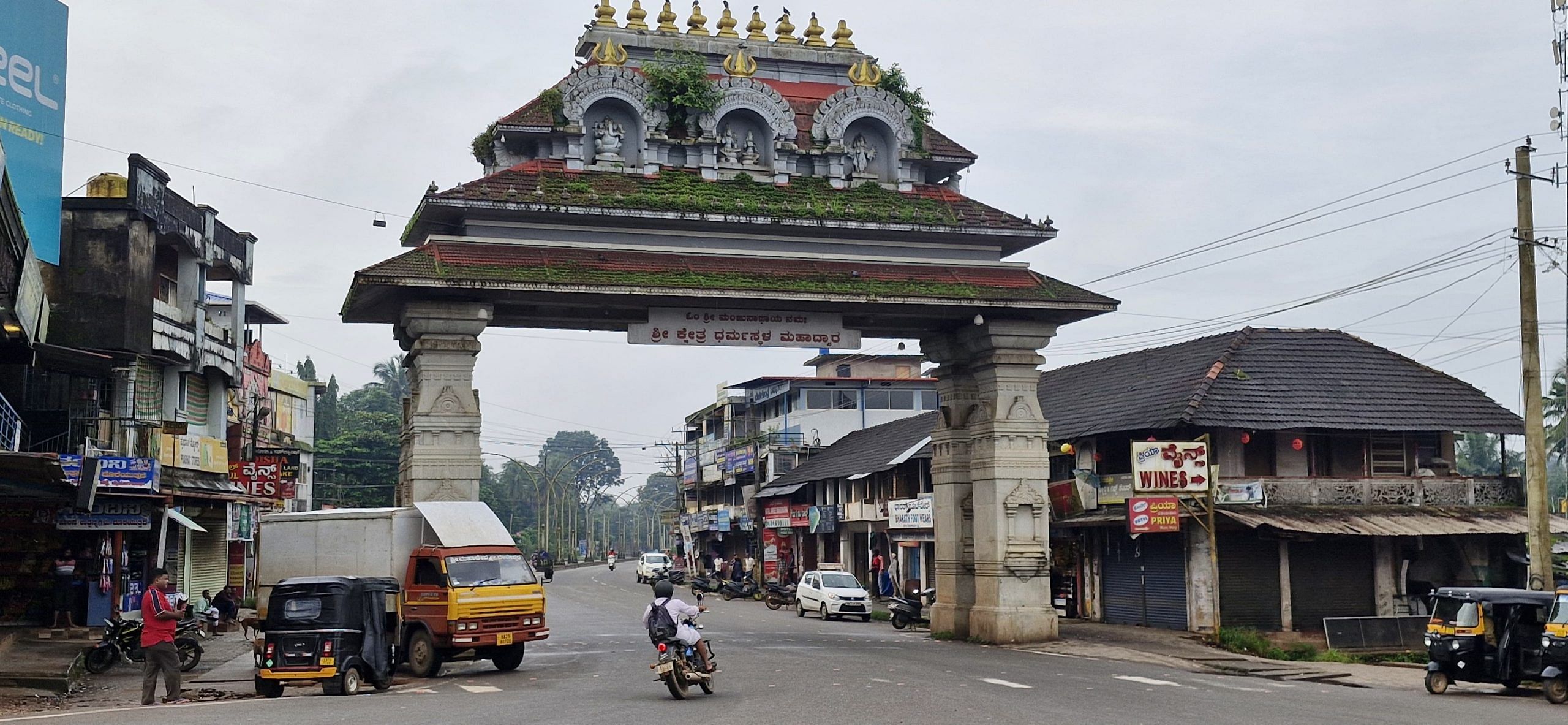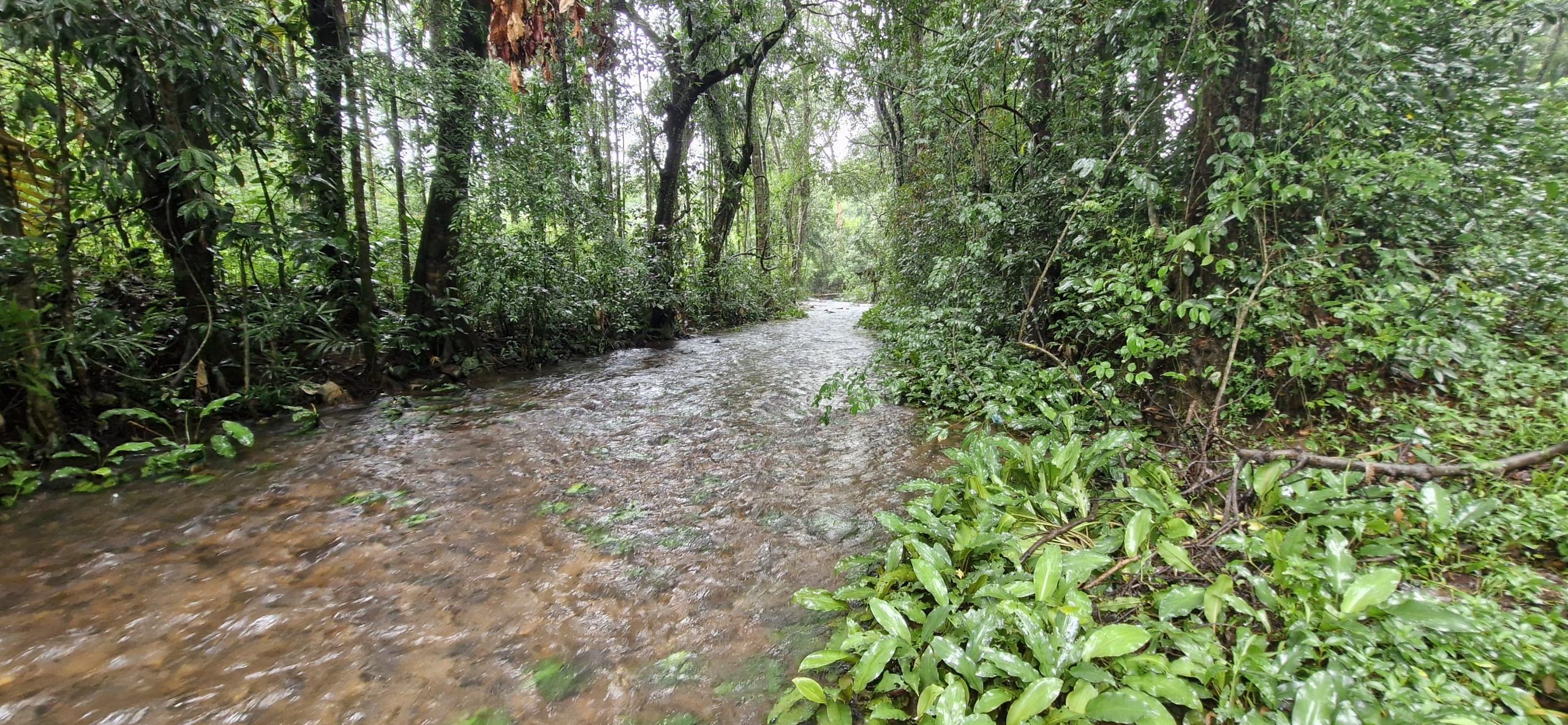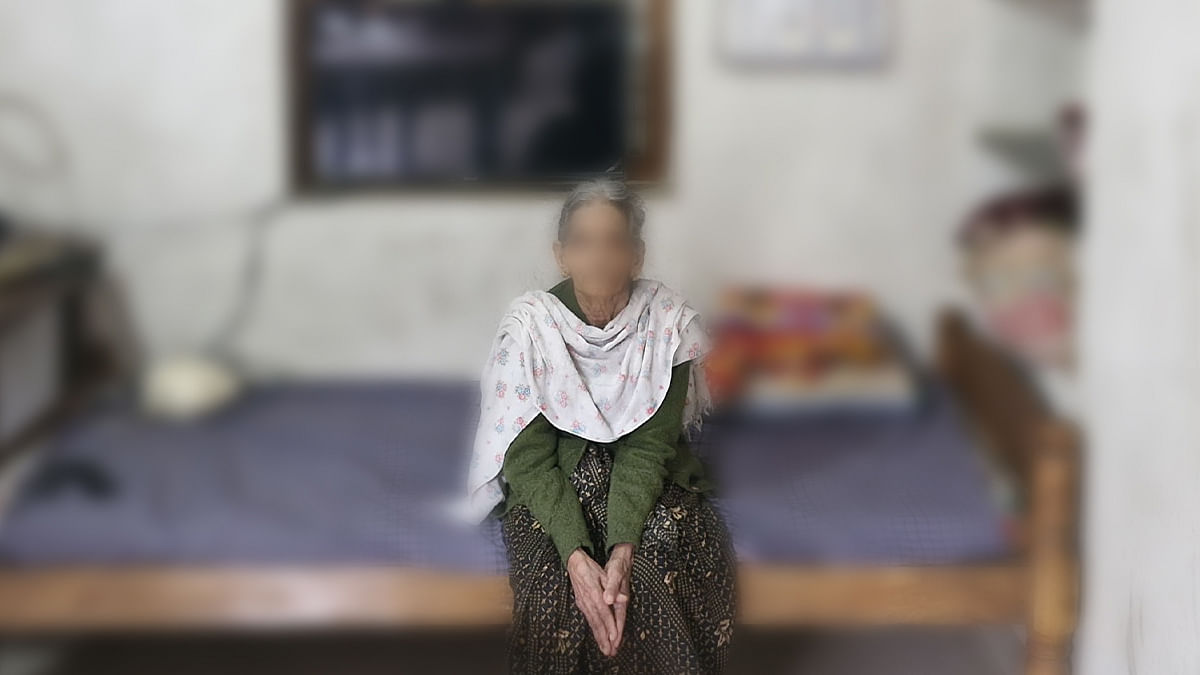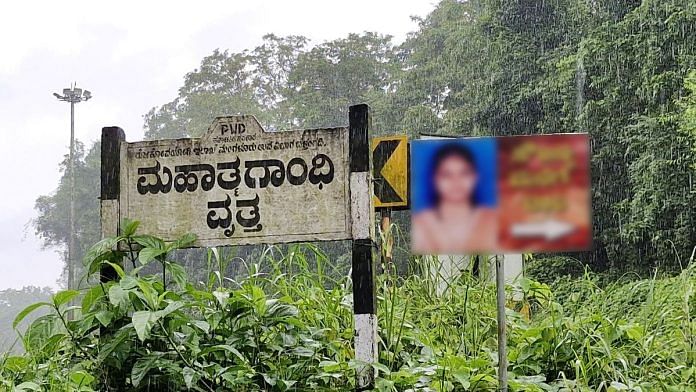Dharmasthala, Karnataka: On 11 July, a Dalit man covered head-to-toe in black cloth walked into a Belthangady court amid heavy security and an entourage of advocates. A former sanitation worker at the Dharmashtala temple, he claimed he was coerced into burying, burning and disposing of “hundreds” of bodies, many of which were of girls as young as 12, and showing signs of sexual assault and torture.
One of the advocates representing him carried a black backpack that many onlookers assumed had documents. But it actually contained the skeletal remains of a woman. “It was the remains of a woman which haunted him for years, which he exhumed himself,” said one person aware of the developments.
A few days before that, on 3 July, the man had released a statement through his lawyers alleging that he was coerced into disposing of bodies by people related to authorities of the Dharmasthala temple. Located in Karnataka’s Dakshina Kannada district, this temple is one of the holiest and most revered Hindu pilgrimage sites in the country.

Since then, the police have cited multiple reasons for not launching a full-fledged probe, including questioning the complainant’s intent, the need for narco and brain mapping tests.
The delays only intensified the mystery surrounding the case and those allegedly involved.
“Before carrying out a full-fledged investigation, we have to cross verify all the facts,” a senior police officer said, adding that they were checking “for some specific information” before moving forward.
Even the skeletal remains produced by the former sanitation worker in court have not been sent to a forensic sciences laboratory (FSL) and are currently being held at a hospital for “medical opinion”, ThePrint has learnt.
The former sanitation worker offered to take the police to the burial sites, but nothing came of it. On the afternoon of 16 July, he sat in a car while his lawyers waited on the road by the Nethravathi river, expecting the police to arrive. Media personnel and townsfolk watched from across the bridge but the police never showed up. The complainant waited 30 minutes and left.
In a statement Wednesday, the Dakshina Kannada SP said that there were credible intelligence inputs that the witness was likely to abscond after the digging of the graves. He also said that the police officers have put in a request to carry out brain mapping, fingerprint scans and narco tests on the complainant.
“He (complainant) was absconding for 10 years. (His) statement was recorded under section 164 of the CrPC (Code of Criminal Procedure) before the police. He has said that he buried the bodies and even offered to show the place of mass burials,” Karnataka CM Siddaramaiah said Friday.
The police, the CM added, will take a call on how to proceed based on its findings, but asserted that there was no pressure on his government to hush up the case.
A fortnight after the allegations surfaced, the Karnataka government has constituted a Special Investigation Team (SIT) to investigate the Dharmasthala matter.
Alongside the gushing Nethravathi river and the lush forested hills of the Western Ghats lies a mystery that is now begging to be heard. The latest allegations have infused life into decades of hushed conversations and murmurs about the frequent washing up of bodies on the banks of Nethravathi or in the dense jungle that runs along it.

Some of these include cases of Vedavalli (1979), Ananya Bhat (2003), and Narayana Sapale and his sister Yamuna (2012).
One of the most notable cases was that of that of a 17-year-old girl allegedly raped and murdered in 2012. Her family and those rallying for her justice, have openly named members of the powerful Heggade family as accused.
Rajya Sabha MP Veerendra Heggade and his family are often referred to as ‘Doddavaru’ (big people) and ‘Dhanigalu’ (landlords)—terms that are used as much with adulation as with fear and discretion.
ThePrint reached Veerendra Heggade for comment via email. This report will be updated if and when a response is received.
A February 2017 order of the Additional City Civil Sessions judge documents that the 17-year-old’s father suspected the involvement of Mallik Jain, Uday Jain and Dheeraj Jain—all associated with the Dharmasthala temple management—who were seen near the scene of the crime. The court was hearing a plea by the teen’s family to transfer her case to the Central Bureau of Investigation (CBI).
Mallik, Uday and Dheeraj were questioned by multiple probe agencies and given a clean chit for want of evidence.
The teen’s mother had, at a public event in August 2023, alleged that Dheeraj, Mallik, Uday and Veerendra Heggade’s nephew, Nischal Jain, raped her daughter. Nischal was not named in any police case or court hearings.
Also Read: What’s the Dharmasthala ‘mass murder’ controversy that’s led to a probe in Karnataka
‘Cannot take on Doddavaru’
A lone Sujatha Bhat looks visibly defeated and distraught as she pets a cat that finds its way to her lap. The cat was likely seeking warmth from the dampness caused by the nearly two days of relentless rains in Ujire, a small town about 8 km from Dharmasthala.
Sujatha’s daughter Ananya (20), a first-year MBBS student at Manipal college, went with her friends to Dharmasthala in 2003 and never came back. It took two days for Sujata, a stenographer with the CBI in Kolkata, to reach Dharmasthala by train.
Repeated attempts to file a complaint were turned down, with the police dismissing her saying that Ananya must have eloped, Sujatha told ThePrint. “I then went to Dharmadhikari (Heggade) and asked him for help. He too dismissed me, saying that he can’t keep track of the thousands of visitors each day. He too said that my daughter may have eloped.”
Helpless, she said she left and sat by a building when three people approached her. They took her with them on the pretext that they knew where Ananya was, she claimed. Sujatha was locked up with her hands tied. The next morning, around 5.30 am, she was allegedly warned to leave the place if she wanted to live. All she remembers was a heavy blow to her head when she refused.
Sujatha said she woke up from a coma three months later. When she returned to home near Mangaluru, it was broken into, all documents and photographs were missing, and the place burnt.
The former sanitation worker’s assertions have infused courage into Sujatha, who wants to find her daughter’s remains and give her a proper burial. Her complaint was never officially filed until earlier this week.
Sujatha has destroyed all of Ananya’s remaining photos as it was unbearable for her. “Had my daughter been alive, I would be playing with my grandkids,” she told ThePrint, her eyes welling up.
Ananya is not the only one. Several women have either gone missing over the years in these very parts or found dead under mysterious circumstances.
A 2016 government commissioned report on women’s safety, chaired by V.S.Ugrappa, documents that nearly 100 unnatural deaths are reported in Belthangady each year. And a large chunk of these are in Dharmasthala.
A narrative doing the rounds was that this was a religious abode and place of reckoning. The supervisor of the former sanitation worker too used the same reason to justify the frequent incidents of bodies washing up around the region.
But, there have been no reports of such mysterious deaths in nearby religious places like Subramanya or Kollur Mookambika which also is surrounded by dense forests and rivers.
Death for taking on the powerful?
In 1979, Vedavalli, a teacher at one of the Dharmasthala management-run colleges in the town decided to take on the administration for allegedly overlooking her for the post of principal. She took the management to court and won, which her family said was seen as a challenge to the authority of “the powerful family”.
She was allegedly burnt alive when her husband was out of town.
Seven years on, a second-year pre-university student of another Dharmasthala-run college, was kidnapped in 1986. Her naked body was later found on the banks of Nethravathi. She was allegedly killed because her father, a communist leader, contested the panchayat elections without the approval of “the family”, her relatives told ThePrint.

A missing complaint was filed, then an FIR for unnatural death. No arrests were made.
Narayana Sapalya, 62, and his sister Yamuna, 45, were found in a pool of blood in their homes in Poorjebailu village just 20 days before the 17-year-old girl’s case. Narayana’s head was smashed with a stone slab and his sister was bludgeoned to death with a grinding stone.
For four generations, the men of this family have been mahouts at the Dharmasthala temple. Sapalya’s son Ganesh believes his father and aunt were killed because they refused to give away the land on which their 400-year-old house stood. If the police had acted, the 17-year-old girl would have been alive today, he said.
In a subsequent complaint to the police, Sapalya’s wife alleged that Veerendra Heggade’s brother, Harshendra, had gone to their home and threatened them earlier on the same issue. There was no development after that.
‘Boars, monitor lizards feast on bodies’
Babu Gowda, a 76-year-old who owned a convenience store around the banks of the Nethravathi for over 40 years, distinctly remembers the claims, conversations of mass burials around the Dharmasthala.
The families of victims, activists and villagers say that the police register cases only against ‘unknown persons’ and never investigate them.
Sitting in his home, surrounded by areca nut and coconut trees, Gowda recalls how sanitation workers from Dharmasthala would frequent his shop and discuss the bodies they were tasked with disposing of. He also recounts how bodies were found when villagers would go into the forest to relieve themselves.
“We used to go to the forest to relieve ourselves, and I have seen parts of bodies being eaten by wild pigs (boars) and monitor lizards,” he states, using the Kannada word ‘Ooda’ to refer to the lizards.
He adds that these bodies were buried in a haphazardly manner, not very deep and covered with just a mound of dirt. A light rain could easily expose the horrors buried beneath, he says.
Gowda recalls instances where girls were dragged into cars in full public view, yet no one dared to object. “Everyone feared for their lives and never spoke out.”
In conversations with several villagers, activists and others, there appeared to be a disturbing pattern in which the bodies were found in certain locations. Most of the bodies of women were found either with no clothes or in underwear, according to them.
A continuing fight for justice
In the 2012 case, the 17-year-old girl was a second year pre-university student at the Sri Dharmasthala Manjunatheshwara College when she went missing.
Her mother can recall every detail about 9 October 2012, when she last saw her daughter alive. The teenager, the second of five children, left for college early without eating anything since she was getting late.
It was the day of Hosa-Akki festival—a feast celebrating the first harvest that includes preparing a dish with new rice, coconut milk and jaggery. “She had even told her friends that she would not eat outside and come home to eat,” the mother recounts.
At the family’s home, there are multiple pictures of the teenager. The mother pauses every few seconds, choking on her words and eyes welling up, as she recalls how her daughter’s body was found the next day.
The girl was tied to a tree with her own dupatta and ID card cord, no clothes on the upper torso, ribs broken and multiple cut marks visible on her.
Her father alleged that Mallik, Uday and Dheeraj were seen near the place from where his daughter was last seen but their role was never probed. The police however named one Santosh Rao as the main culprit.
The case was initially probed by the Belthangady police, then it was transferred to the Criminal Investigation Department (CID), and then the CBI, the 2017 court document mentioned earlier, notes. The CBI also filed a charge sheet against Rao.
Rao was later acquitted on grounds of no evidence by a trial court.
In September last year, the Karnataka High Court rejected a plea for a fresh probe into the case.
The mother hopes the new allegations that have surface will help continue the fight for many girls who were raped and murdered in the region in the past but never got justice.
There is an ongoing campaign to get justice for her daughter. The pressure around her case is such that people here even refuse to give directions to her home. Therefore, the family has put up signboards to help anyone involved in the fight to get her justice, find her home.
“In 13 years, there have been no murder cases. My daughter’s case was the last. It would have come to light now if something had happened and would have spread since there are mobile phones now. My daughter was the last and she is a goddess who has stopped the atrocities,” she says.
Her daughter, if alive, would have been 30 today.
(Edited by Tony Rai)
Also Read: ‘Won’t be surprised if Prajwal is welcomed with garlands’ — 1 yr on, victims still hiding







Why the media is not reporting this case